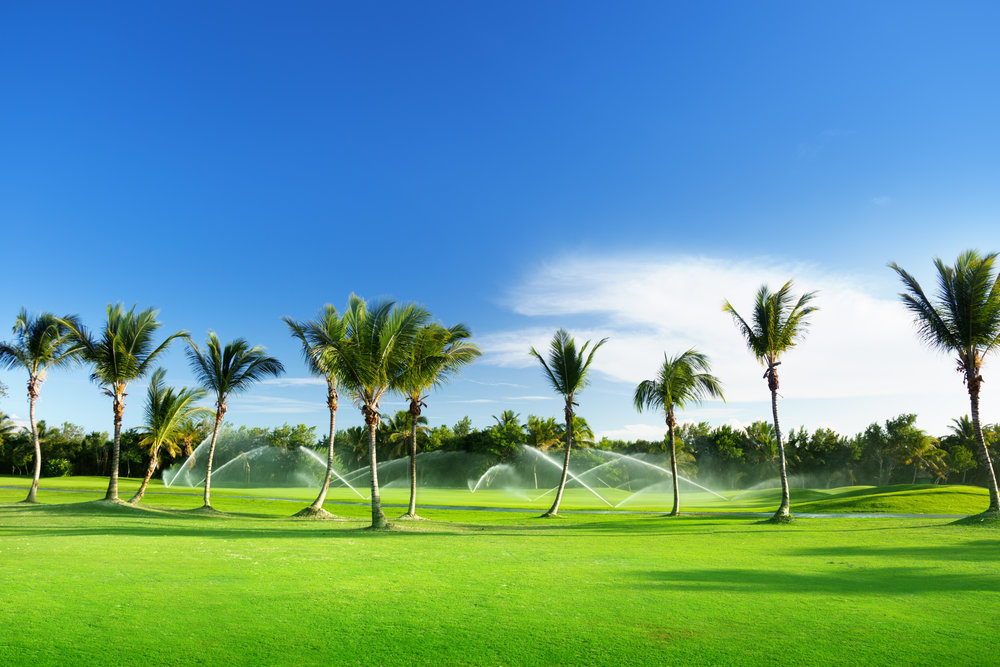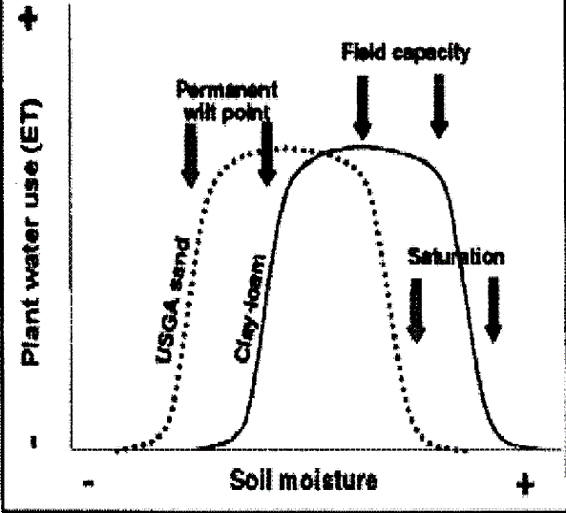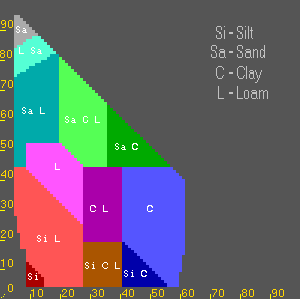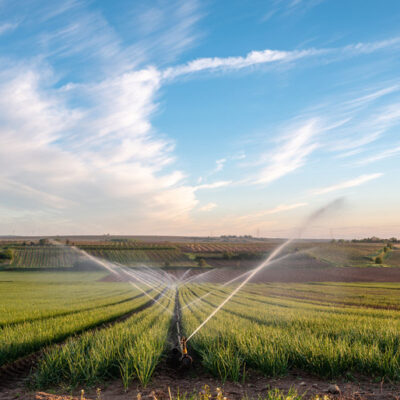Basic Knowledge Required to Decide on Efficiency
- The total area to be irrigated.
- The amount of irrigation applied over the period.
- The amount of rainfall received over the period.
- The amount of water needed by the turf over the period.
- Only then can comparisons be made between one course and another.
What happens to applied water?
An ‘air freshener’ in the corner of a closed room will eventually fill the whole room. This does not happen with water applied to soil.
Modest amounts of water applied will be held in the top layer of the soil and will not sink below a certain level.
View the following movie:
Water Added to Dry soil
- Light brown is dry soil
- Dark brown is saturated soil
- Medium brown is soil holding water at field capacity
- Notice when the water content is at field capacity, it does not sink any more
What Happens with Lots of Water
The layer of water continues downwards leaving in its wake, soil containing trapped water at what is called Field Capacity. With enough water applied, some will ‘drop out of the bottom’.
View the following movie:
More Water Added
Water/Root Levels
Notice the layer at field capacity ends up below the bottom level of the roots. The roots can only use what surrounds them, not that below.
How much Water Will the Soil Hold?
- Sandy soils will hold less water per volume of soil than heavy clay/loam soils
- On the other hand heavy soils will hold more, but will hang onto the water more, preventing the roots from absorbing it.
- There are several soil water calculators available online
- With the % sand, clay and silt estimated in the soil sample, its water holding capabilities can be determined
Usable Water
- Water has to be where the roots are.
- If the soil is totally saturated, there is insufficient oxygen and the grass will ‘drown’.
- When very dry, the soil will hang onto the remaining water, preventing the roots from absorbing it.
The Soil/Water Triangle
- Calculators tell how much water will be held at Field Capacity (FC) for different soil types
- Tells where the Permanent Wilt Point will be (PWP)
- FC – PWP = AW (Plant Available Water)
- The units in are cubic centimetres of water per cubic centimetre of soil
How Water Gets Used Up
- Evaporation to the atmosphere from the surface of the soil
- Transpiration from the leaves, fed from water absorbed by the roots.
- The two combined, called Evapotranspiration (ET)
- The rate of ET is strongly affected by the weather.
Where the Water Gets Used From
- Predominantly from the root zone.
- The soil beneath the root zone, will stay damp.
- This is the reason the roots will grow down if the top layer is allowed to dry out periodically.
- The longer the roots, the bigger the soil reservoir and the longer the time needed between irrigations.
An Application
Abu Dhabi has a centrally controlled system to manage water, TSE pumping and storage, using SCADA. It already has several hundred irrigation controllers applying the TSE to plants, but independent of SCADA.
In the summer, the amount of TSE is less as many residents leave, so less sewage! There is a greater demand for irrigation in the summer, but not necessarily enough TSE to supply all of that demand. Thus the existing irrigation controllers need to be incorporated into the SCADA network to collaborate with the pumping and storage of TSE.
Advantages when Controllers are Integrated
Using a network of 3 weather stations, the central control can adjust the amount of water applied to each station, through a command to each Tbox. But, if the amount of TSE needed is not available, the central control can implement what is called ‘deficit watering’.
It is better to put less water on the plants regularly, than enough water, then none when the reservoirs run dry! By centrally distributing the irrigation start times on individual Tboxes, the pipes feeding the TSE are not overloaded.
What is Wrong with Using the Existing Controllers?
Rain Bird, Hunter, Toro all have excellent irrigation controllers. These companies also have methods of networking these controllers. These networks are closed, with closely guarded protocols.
None of these networks are SCADA. To try and hack an interface in their networks is technically risky and very, very difficult.
These companies are big, ponderous and make technical decisions slowly. To open their systems allowing SCADA control is extremely unlikely, as there would not be much money in it for them. For each manufacturer, this opening of the network would need to be negotiated and implemented.
What is Wrong with Using a PLC as an Irrigation Controller?
A PLC, including a Tbox is not an irrigation controller. It is a general-purpose computer with software languages built-in which help developers construct control of plant and machinery. It also has SCADA built-in.
A useful irrigation controller is not simply running outputs for a given time, it is more sophisticated. An irrigation controller has features which allow just the right amount of water to be applied to the plants, according to their needs.
To make a general-purpose PLC or Tbox into an irrigation controller, software must be written. TWL and Amber together have incorporated irrigation best practice software into the Tbox.




